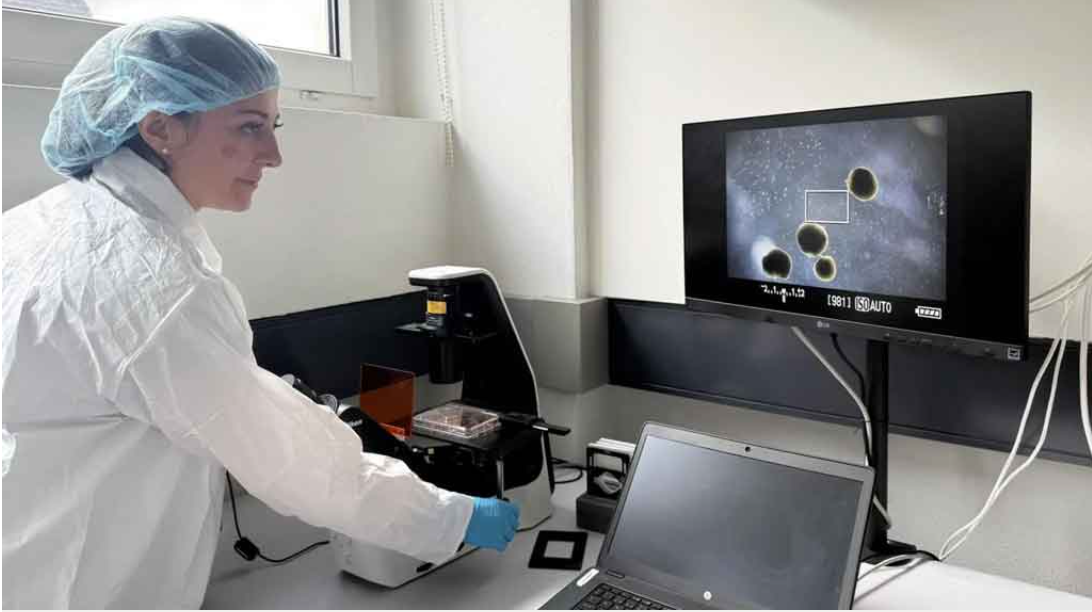Desk Report:
It may sound like science fiction. But some researchers are actually trying to build computers using brains grown in the lab, and some progress has been made. A team of scientists in Switzerland is leading this journey into the strange world of biocomputing.
Scientists hope to one day see data centers that will house ‘living’ servers. These servers will mimic some aspects of how artificial intelligence (AI) learns and will operate using less power than current methods.
The components of a conventional electronic computer can be divided into two main parts: hardware and software. However, in the case of this biocomputer, Dr. Fred Jordan, co-founder of FinalSpark Labs, uses the term ‘wetware’. The explanation of this somewhat strange word is simply that it is an ‘organoid’ made of neurons produced in the laboratory from stem cells. It is basically a cluster of neurons and supporting cells. The organoid is connected to electrodes (electrodes). That is when the process of using it as a mini-computer begins.
Dr. Jordan admits that the idea of biocomputing may sound strange to many. “People have been familiar with this idea for a long time in science fiction,” he says. “When you say, ‘I’m going to use a neuron as a little machine,’ it gives us a different perspective on the brain and allows us to question our existence.”
The process of creating this biocomputer in the FinalSpark lab begins with stem cells taken from human skin. These cells were purchased by researchers in Switzerland from a clinic in Japan. The identity of the donors is unknown. However, many volunteers are now interested in donating stem cells.
“Many people come to us. But we only choose stem cells from official suppliers, because the quality of the cells is very important.”
In the FinalSpark lab, neurons and supporting cells made from stem cells are combined to create clusters or clusters. These are mini-brains. They do not have the complexity of the human brain, but their structural components are similar. After a few months of processing, these mini-brains are ready to be connected to the electrodes. They are able to respond to simple keyboard commands.
Researchers say that these mini-brains have a method of sending and receiving electrical signals and the results are recorded on a simple computer. It is a very simple matter. For example, when a button on the keyboard is pressed, it sends an electrical signal to the mini-brain through the electrodes. Then, if that mini-brain works (it does not always), a small activity is seen on the screen.
The graph of this activity displayed on the screen looks a lot like an EEG (electroencephalogram). Dr. Jordan said that they still do not understand much about what the organoids are doing and why. However, for now, one of the main goals of the researchers is to create electrical stimulation in the organoids or mini-brains. That is, stimulating the biocomputer’s neurons to learn and gradually enabling them to perform tasks is the first important step.
Keeping a normal computer running is easy—all it needs is a power supply. But what happens in the case of a biocomputer? This is a question that scientists have not yet answered. How will organoids survive in this case or how will they get power? In response to this question, Simon Schulz, director of the Center for Neurotechnology at Imperial College London and professor of neurotechnology, said, “Organoids do not have blood vessels. The human brain has blood vessels that are spread across different layers and that provide nutrients to the brain to keep it functioning. We cannot yet make them properly. This is the biggest challenge.”
One thing is certain: when a computer becomes ineffective, we think it has stopped permanently, but in the case of ‘wetware’, it literally dies. FinalSpark has made some progress in the last four years. Their organoids now live for up to four months.
However, some strange things happen when they die. Sometimes organoids suddenly become very active before they die—for example, in some people, heart rate and brain activity increase at the moment of death. “In some cases, we have seen organoid activity increase very rapidly in the last minutes. In the last five years, we have recorded about 1,000 to 2,000 such deaths,” says Dr. Jordan.
FinalSpark is not the only company working on biocomputing. In 2022, Australia’s Cortical Labs announced that it was able to play the rudimentary computer game ‘Pong’ with neurons grown in the laboratory.
Researchers at Johns Hopkins University in the US are also creating ‘mini-brains’. They want to see how they process information—particularly to develop drugs for neurological diseases such as Alzheimer’s and autism. It is hoped that artificial intelligence will be able to make such work faster and more efficient.
Dr. Lena Smirnova of Johns Hopkins University said that wetware is scientifically interesting, but still in its early stages. He said it is unlikely to replace the main component of a computer chip. According to him, “Biocomputing silicon will not be a substitute for AI but will work as a complement. It will also help in creating diagnostic models and reducing the use of animals in laboratories.”
Professor Schulz also agrees. “I think they will not be able to compete with silicon in many areas, but they will find a specific area you will get it.




